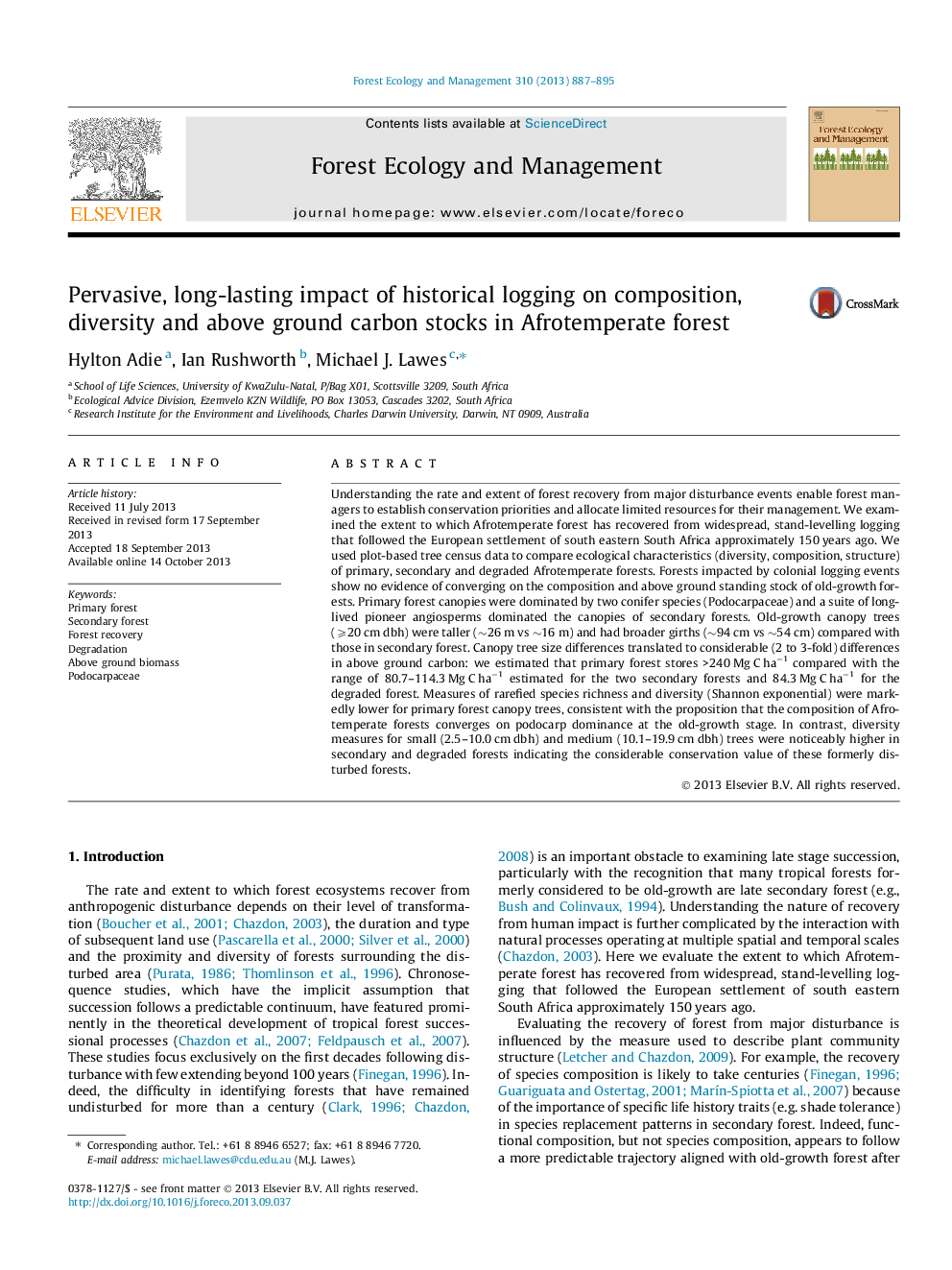| Article ID | Journal | Published Year | Pages | File Type |
|---|---|---|---|---|
| 6543904 | Forest Ecology and Management | 2013 | 9 Pages |
Abstract
Understanding the rate and extent of forest recovery from major disturbance events enable forest managers to establish conservation priorities and allocate limited resources for their management. We examined the extent to which Afrotemperate forest has recovered from widespread, stand-levelling logging that followed the European settlement of south eastern South Africa approximately 150 years ago. We used plot-based tree census data to compare ecological characteristics (diversity, composition, structure) of primary, secondary and degraded Afrotemperate forests. Forests impacted by colonial logging events show no evidence of converging on the composition and above ground standing stock of old-growth forests. Primary forest canopies were dominated by two conifer species (Podocarpaceae) and a suite of long-lived pioneer angiosperms dominated the canopies of secondary forests. Old-growth canopy trees (⩾20 cm dbh) were taller (â¼26 m vs â¼16 m) and had broader girths (â¼94 cm vs â¼54 cm) compared with those in secondary forest. Canopy tree size differences translated to considerable (2 to 3-fold) differences in above ground carbon: we estimated that primary forest stores >240 Mg C haâ1 compared with the range of 80.7-114.3 Mg C haâ1 estimated for the two secondary forests and 84.3 Mg C haâ1 for the degraded forest. Measures of rarefied species richness and diversity (Shannon exponential) were markedly lower for primary forest canopy trees, consistent with the proposition that the composition of Afrotemperate forests converges on podocarp dominance at the old-growth stage. In contrast, diversity measures for small (2.5-10.0 cm dbh) and medium (10.1-19.9 cm dbh) trees were noticeably higher in secondary and degraded forests indicating the considerable conservation value of these formerly disturbed forests.
Related Topics
Life Sciences
Agricultural and Biological Sciences
Ecology, Evolution, Behavior and Systematics
Authors
Hylton Adie, Ian Rushworth, Michael J. Lawes,
